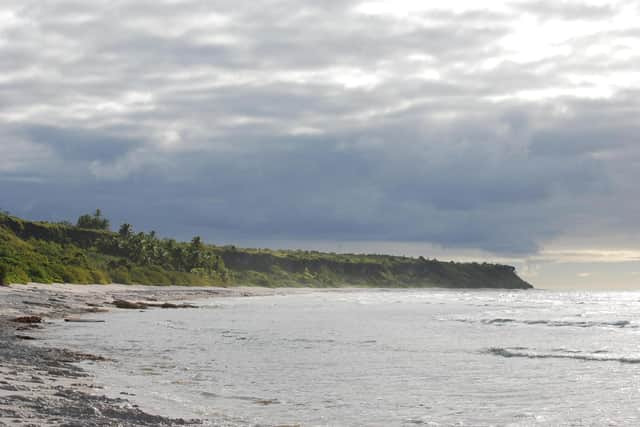RAF veteran from Yorkshire becomes mayor of Mutiny on the Bounty island and British colony Pitcairn
Pitcairn is a remote British Overseas Territory possession where the most senior political office is now held by Simon Young, 57, an RAF veteran from Pickering in North Yorkshire who has lived on the island for 22 years.
Pitcairn is 1,350 miles from the nearest mainland, depends mainly on income from cruise ship visitors and is only accessible by sea despite having no natural harbour. The population, never large, peaked at around 230 in the 1930s but has dwindled to 40-50, many of whom claim direct descent from Bounty crewman Fletcher Christian, the other mutineers and the Polynesian women they brought to the island as ‘wives’ after the British ship was landed and burnt in 1790.
Advertisement
Hide AdAdvertisement
Hide AdIncredibly, Mr Young isn’t the only Yorkshireman living in the colony – Mike Lupton-Christian, from Keighley, is an apiarist and Leeds United fan married to community police officer Brenda Christian, who brought him home with her in 1999 after she had been living in the UK.


Mr Young is the first person not born on Pitcairn to ever serve as its mayor. He will represent a group of four islands, only one of which is inhabited.
Any of the residents who wish to visit the mainland must rely on 32-hour crossings on supply ships to Mangareva Island, population 1,239, from where they can fly to Tahiti. The islanders speak a dialect that mixes Tahitian with 18th-century English derived from Portsmouth.
Mr Young first visited Pitcairn in 1992 after 10 years with the RAF, having applied for permission from the island council. He travelled there on a container ship from New Zealand, a journey that took nine days. He returned in 2000 with his wife, Shirley.
Advertisement
Hide AdAdvertisement
Hide AdThe island’s population has fallen as young people have emigrated, and there are now no children living there. A doctor and social worker are recruited from overseas for postings serving the community.
Pitcairn made global headlines in 2004 and 2006, when six local men were convicted of historic sexual abuse. Mr Young told The Times that the community wished to move on from the trials, and to focus on environmental matters and tourism – they are building a marine science centre for climate change monitoring. Only three cruise ships have visited since Covid-19 – though Russian vessels have recently been banned from calling.
Pitcairn was first charted in 1767 by HMS Swallow, though its position was marked incorrectly on maps. The mutineers were undisturbed until 1803, and the island became a British colony in 1838.
Master’s mate Fletcher Christian seized command of HMS Bounty from Lieutenant William Bligh during a voyage to Tahiti, but by the time authorities discovered the Pitcairn settlement, he had died and only one of the original group of sailors was still alive.
